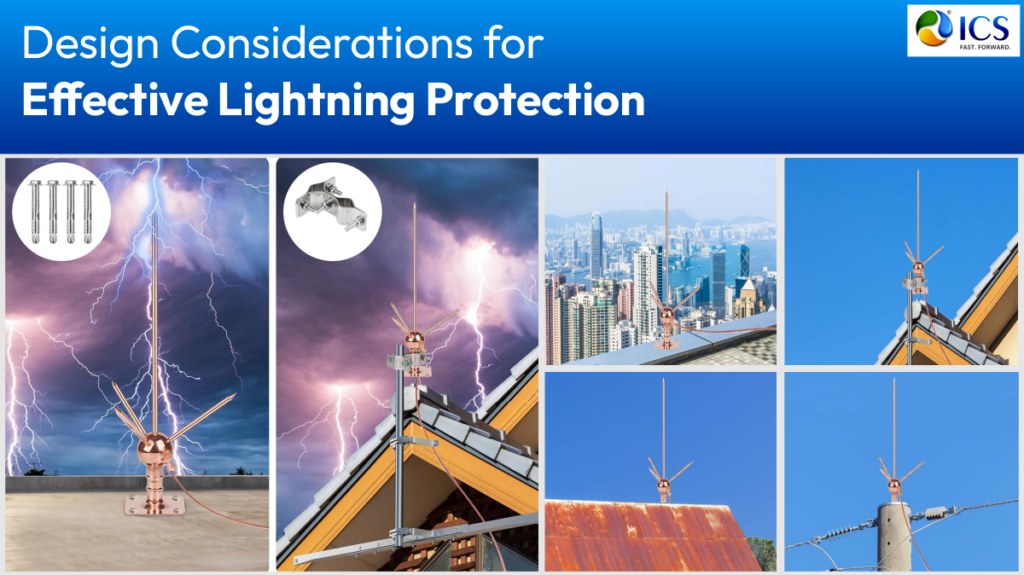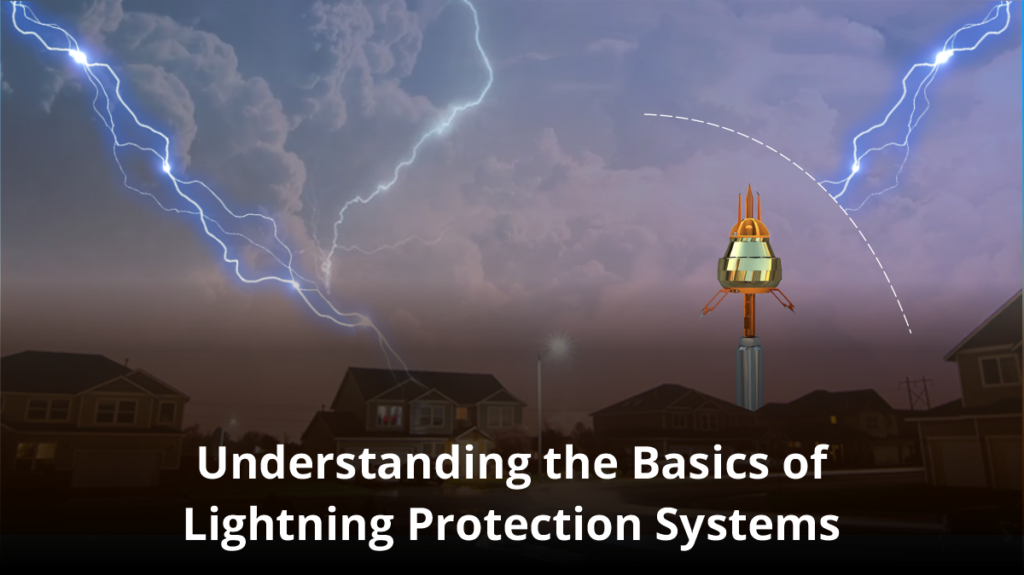Lightning is one of nature’s most powerful and unpredictable forces, with the potential to cause catastrophic damage to structures, systems, and human life. Implementing an effective lightning protection system (LPS) is crucial for safeguarding infrastructure, ensuring operational continuity, and reducing risks associated with lightning strikes. Properly designed systems can mitigate the devastating effects of lightning by providing safe pathways for electrical discharge, thereby protecting lives and assets.
At ICS Technology Services, we specialize in designing and implementing advanced lightning protection systems tailored to meet the unique needs of various industries. This blog outlines key design considerations for effective lightning protection while highlighting how ICS can help you protect your business and infrastructure.
Risk Assessment
The first step in designing an LPS is conducting a thorough risk assessment. This involves evaluating factors like:
- The geographic location and its lightning strike density.
- The structure’s height, material composition, and occupancy.
- The potential consequences of lightning strikes, including asset damage, operational downtime, and human safety.
A detailed risk assessment helps determine the level of protection required and guides the overall design process.
External Lightning Protection System (ELPS)
The external system is the first line of defense against lightning strikes. It includes three key components:
- Air Terminals (Lightning Rods): Strategically placed on the highest points of a structure to intercept lightning strikes.
- Down Conductors: Provide a direct path for the lightning current to flow safely from the air terminals to the ground.
- Grounding System: Dissipates the electrical charge into the earth, ensuring the current doesn’t pose a threat to the structure or nearby systems.
Proper placement, spacing, and connection of these components are critical to the effectiveness of the ELPS.
Internal Lightning Protection System (ILPS)
While the external system prevents direct strikes, the internal system safeguards the electrical and electronic infrastructure within a building. Key considerations include:
- Surge Protection Devices (SPDs): Installed at key points in the electrical system to prevent damage from voltage spikes caused by lightning.
- Equipotential Bonding: Ensures that all metallic parts and systems are at the same electrical potential to prevent dangerous voltage differences.
ICS uses advanced simulation tools to design internal protection systems that minimize electromagnetic interference and voltage surges.
Compliance with Standards
Adhering to international lightning protection standards is essential for ensuring system reliability and safety. Standards such as IEC 62305 and NFPA 780 outline best practices for LPS design, including material requirements, component specifications, and installation guidelines.
At ICS, we ensure all our designs comply with these global standards while customizing solutions to meet local regulatory requirements.
Grounding and Soil Conditions
The effectiveness of the grounding system largely depends on the soil’s electrical resistivity. High-resistance soil can hinder the dissipation of lightning current, reducing the overall efficiency of the LPS. To address this, designers often use methods like:
- Adding chemical compounds to reduce soil resistivity.
- Using advanced grounding materials, such as copper-bonded rods and conductive concrete.
ICS incorporates detailed soil analysis into every project to ensure optimal grounding system performance.
Maintenance and Inspection
An LPS is only as good as its maintenance program. Over time, components can corrode, connections can loosen, and ground conditions can change, all of which can compromise the system’s performance. Regular inspections, testing, and preventive maintenance are crucial for long-term reliability.
ICS provides end-to-end lifecycle management, from system design and installation to periodic inspections and upgrades.
Custom Solutions for Unique Structures
Different types of structures require tailored approaches to lightning protection. For instance:
- Industrial Facilities: Require robust systems to protect machinery and sensitive equipment.
- High-Rise Buildings: Need advanced grounding solutions to manage higher lightning currents.
- Historical Structures: Demand minimally invasive designs to preserve architectural integrity.
ICS combines technical expertise with innovative design strategies to deliver customized solutions for diverse infrastructure types.
Why Choose ICS for Lightning Protection Design?
At ICS, we understand the complexities of designing effective lightning protection systems. Our team leverages cutting-edge technologies, industry best practices, and decades of experience to deliver reliable, cost-effective solutions. From risk assessment to implementation, we partner with you to safeguard your assets and operations.
Our Lightning Protection Design Services include:
- Comprehensive risk analysis.
- Customized LPS design adhering to global standards.
- Integration of surge protection and grounding systems.
- Lifecycle support, including installation, maintenance, and upgrades.
Take Action Today
Protect your infrastructure and ensure operational continuity with ICS Lightning Protection Design Services. Contact us now to discuss your needs and let our experts create a tailored solution that delivers unmatched safety and reliability.
Get in touch with ICS today to design your lightning protection for the future.

